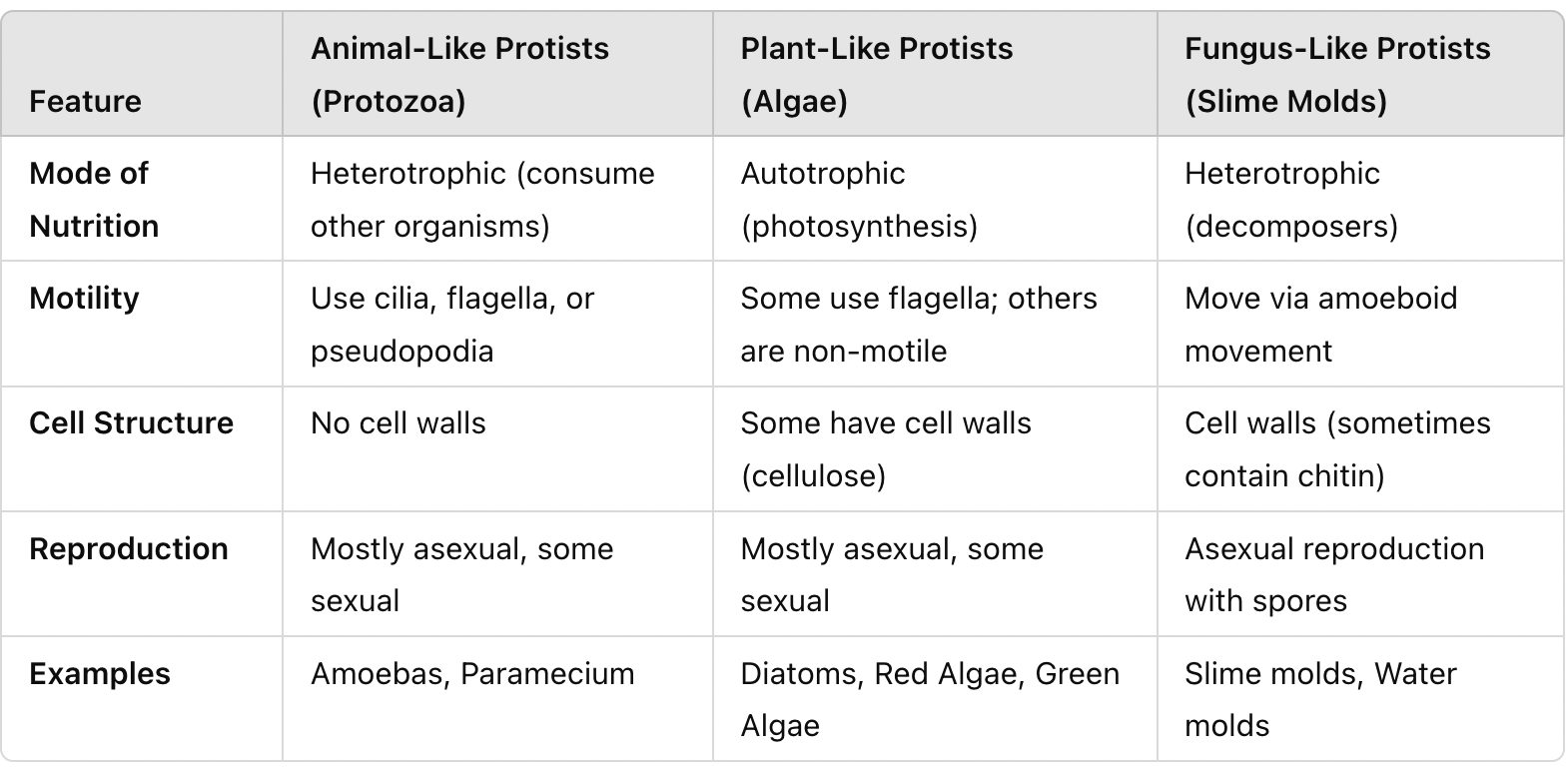Topic 3- Eukaryotes
1/22
There's no tags or description
Looks like no tags are added yet.
Name | Mastery | Learn | Test | Matching | Spaced |
|---|
No study sessions yet.
23 Terms
What are the key structural features of eukaryotic cells?
DNA in a nucleus, membrane-bound organelles, cytoplasm, 10-100 micrometers in size, exist as single-celled, colonies, or multicellular organisms.
How do eukaryotic cells differ from prokaryotic cells?
Eukaryotic cells have a nucleus, membrane-bound organelles, and are larger (10-100 µm), whereas prokaryotic cells lack a nucleus and organelles and are smaller (0.1-5 µm).
What is the significance of endosymbiosis in eukaryotic cell evolution?
Endosymbiosis led to the formation of mitochondria and chloroplasts by engulfing prokaryotic bacteria.
What was the first step in eukaryotic evolution?
The formation of the first eukaryotic cell through the engulfment of an aerobic alpha-proteobacterium (mitochondria).
How did mitochondria and chloroplasts originate?
Through primary endosymbiosis—mitochondria from an aerobic alpha-proteobacterium, chloroplasts from a cyanobacterium.
What are the four major eukaryotic supergroups?
Excavata, SAR Clade, Archaeplastida, Unikonta.
What is secondary endosymbiosis?
A eukaryotic cell engulfs another eukaryotic cell that has already undergone primary endosymbiosis, leading to complex plastid evolution (e.g., red and green algae).
What led to the rise of multicellularity?
The transition of some eukaryotic lineages from unicellular to multicellular forms (e.g., plants, fungi, animals).
What are the three main types of protists?
Animal-like (protozoa), plant-like (algae), fungus-like (slime molds).
What defines the Archaeplastida supergroup?
Primary endosymbiosis of a cyanobacterium, leading to chloroplasts; includes red algae, green algae, and land plants.
What defines the SAR Clade?
Genetic characteristics and secondary endosymbiosis of red algae; includes Stramenopiles, Alveolates, and Rhizarians.
What are the defining traits of Stramenopiles?
Two flagella (one long and hairy, one short and smooth), many are photosynthetic (e.g., diatoms).
What are the defining traits of Alveolates?
Flattened membrane sacs (alveoli) beneath plasma membrane; includes Apicomplexans (e.g., Plasmodium, malaria).
What are the defining traits of Rhizarians?
Skeletal structures made of calcium carbonate or silica, includes foraminiferans (forams).
What defines the Amoebozoa supergroup?
Amoeboid movement, includes slime molds and entamoebas.
What defines the Opisthokonta supergroup?
Genetic characteristics shared among fungi and animals; includes nucleariids (sister to fungi) and choanoflagellates (sister to animals).
What defines the Discoba supergroup?
Crystalline rod structure in flagella; includes euglenids, trypanosomes, and mixotrophs.
What are the three main types of protists?
The three main types of protists are:
Animal-like protists (Protozoa) – Heterotrophic and consume other organisms. Plant-like protists (Algae) – Autotrophic and perform photosynthesis. Fungus-like protists (Slime Molds) – Heterotrophic decomposers.
How do the three types of protists obtain their nutrients?
Animal-like protists feed by ingesting other organisms or organic matter. Plant-like protists produce their own food through photosynthesis. Fungus-like protists absorb nutrients from decaying matter.
How do the three types of protists move?
Animal-like protists move using structures such as cilia, flagella, or pseudopodia. Plant-like protists can be motile with flagella or non-motile. Fungus-like protists use amoeboid movement to crawl along surfaces.
Do all protists have cell walls?
No, not all protists have cell walls. Animal-like protists do not have cell walls. Plant-like protists may have cell walls made of cellulose. Fungus-like protists can have cell walls, sometimes containing chitin.
What are some examples of each type of protist?
Animal-like protists: Amoebas and Paramecium. Plant-like protists: Diatoms, Red Algae, and Green Algae. Fungus-like protists: Slime molds and Water molds.
Compare and contrast characteristics of protists (mode of nutrition, motility, cell structure, reproduction, examples)
